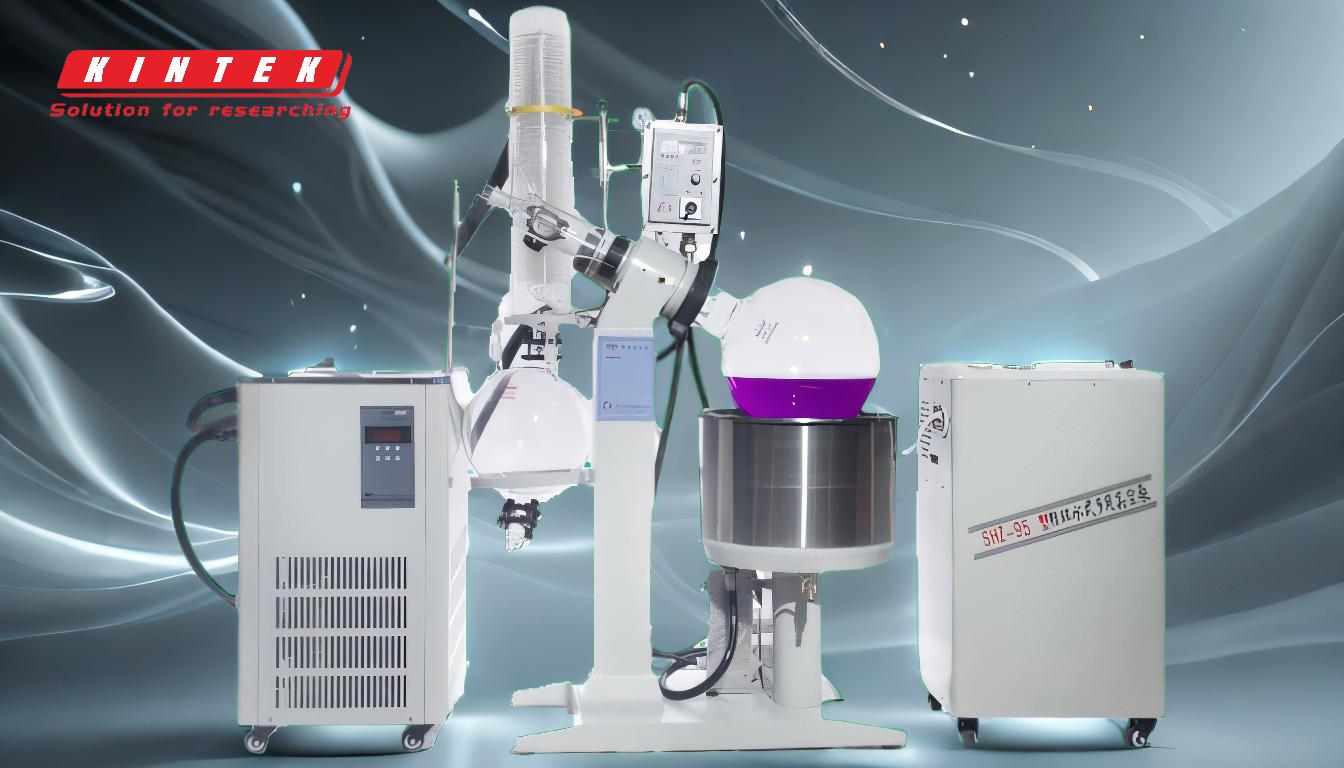The "best" type of distillation depends on the specific application, the properties of the materials being distilled, and the desired outcome. Simple and fractional distillation are widely used in industries like petroleum refining and laboratories due to their versatility and efficiency. However, for high molecular weight products or heat-sensitive materials, methods like molecular distillation, vacuum distillation, or short path distillation are more suitable. Each method has unique advantages and limitations, making the choice context-dependent. Below, we explore the key types of distillation and their applications to help determine the best option for specific needs.
Key Points Explained:

-
Simple Distillation
- How it works: Separates liquids with significantly different boiling points (e.g., water and salt). The mixture is heated, and the vapor is condensed back into a liquid.
- Best for: Purifying liquids with large boiling point differences, such as desalination or separating solvents.
- Limitations: Not effective for mixtures with close boiling points or complex compositions.
-
Fractional Distillation
- How it works: Uses a fractionating column to separate components with closer boiling points (e.g., crude oil into gasoline, diesel, etc.).
- Best for: Industrial applications like petroleum refining and chemical production.
- Limitations: Requires precise temperature control and is less suitable for heat-sensitive materials.
-
Steam Distillation
- How it works: Introduces steam to lower the boiling points of heat-sensitive compounds, allowing separation without decomposition (e.g., essential oils from plants).
- Best for: Extracting volatile compounds from natural products, such as essential oils or fragrances.
- Limitations: Limited to materials that can tolerate steam and have volatile components.
-
Vacuum Distillation
- How it works: Reduces pressure to lower boiling points, preventing thermal degradation of sensitive materials (e.g., purifying vitamins or pharmaceuticals).
- Best for: Heat-sensitive compounds or high-boiling-point materials.
- Limitations: Requires specialized equipment and is more complex to operate.
-
Short Path Distillation
- How it works: Distills materials under reduced pressure with a short path between the evaporation and condensation surfaces, minimizing exposure to heat.
- Best for: Purifying small quantities of high-value, heat-sensitive materials (e.g., cannabinoids, essential oils).
- Limitations: Not scalable for large industrial applications.
-
Molecular Distillation
- How it works: Creates a thin film of material in a heated chamber under high vacuum, allowing separation based on boiling points without thermal degradation.
- Best for: High molecular weight products, such as reprocessing residues or heat-sensitive compounds.
- Limitations: Requires advanced equipment and is less common in general applications.
-
Zone Distillation
- How it works: Uses a temperature gradient to purify materials by moving a molten zone through a solid sample.
- Best for: Ultra-high-purity materials, such as semiconductors or metals.
- Limitations: Highly specialized and not suitable for most common applications.
Choosing the Best Type of Distillation:
- For general purposes: Simple or fractional distillation is often sufficient, especially in industries like petroleum refining or chemical production.
- For heat-sensitive materials: Vacuum or short path distillation is preferable to avoid thermal degradation.
- For high molecular weight compounds: Molecular distillation is ideal due to its ability to handle complex and heat-sensitive materials.
- For natural product extraction: Steam distillation is the go-to method for isolating essential oils or fragrances.
In conclusion, the best type of distillation depends on the specific requirements of the process, including the nature of the materials, the desired purity, and the scale of production. Understanding the strengths and limitations of each method is crucial for making an informed decision.
Summary Table:
| Distillation Type | Best For | Limitations |
|---|---|---|
| Simple Distillation | Purifying liquids with large boiling point differences (e.g., desalination) | Not effective for mixtures with close boiling points or complex compositions |
| Fractional Distillation | Industrial applications (e.g., petroleum refining, chemical production) | Requires precise temperature control; less suitable for heat-sensitive materials |
| Steam Distillation | Extracting volatile compounds (e.g., essential oils, fragrances) | Limited to materials that can tolerate steam |
| Vacuum Distillation | Heat-sensitive or high-boiling-point materials | Requires specialized equipment; more complex to operate |
| Short Path Distillation | Purifying small quantities of high-value, heat-sensitive materials | Not scalable for large industrial applications |
| Molecular Distillation | High molecular weight or heat-sensitive compounds | Requires advanced equipment; less common in general applications |
| Zone Distillation | Ultra-high-purity materials (e.g., semiconductors, metals) | Highly specialized; not suitable for most common applications |
Need help choosing the right distillation method? Contact our experts today for personalized advice!











